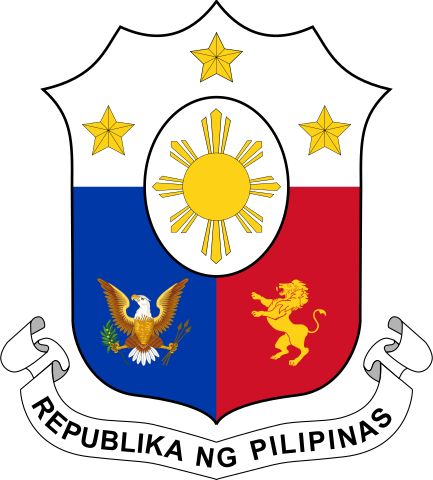Taking the challenge of soaring high in research and development (R&D) to address soil / land degradation, agro-biodiversity loss and climate change in agriculture, the Bureau of Soils and Water Management of the Department of Agriculture (DA-BSWM) held via Zoom and Facebook live the 1st BSWM “Symposium on Soil and Water Research and DevelopmentStudies” on June 7, 2021. The event also depicts how the three R&D initiatives support the Department of Agriculture’s endeavor towards its “Ani at Kita” Program.
BSWM Dir. Sonia Salguero formally opened the event. Dir. Salguero congratulated the researchers for their commitment and highlighted the importance of R&D Manual as their standard guide.
Presented during the conference were technologies and initiatives, which include, two digital applications for smarter nutrient management of corn and improved designing of small water reservoir and diversion dam. R&D initiatives on the performance and impact valuation of the use of solar pumps in Visayas, land and water evaluation of Cabaluan Watershed in Zambales using geo-spatial technology, and determination of nitrogen use efficiency using isotopic technique for rice were also presented during the event.
Mr. Roland V. Rallos of the Philippine Nuclear Research Institute, Department of Science and Technology (DOST-PNRI), presented the developed application, which can produce refined fertilizer recommendation for yellow corn based on soil test calibrations minimizing nutrient loss by around 25% and in turn increasing crop yield and productivity. The developed application utilized the results from the PCAARRD-DOST funded study of the BSWM and PNRI.
The performance and impact valuation of the use of solar pumps for high-value commercial crops in Visayas is a development project presented by Dr. Edna D. Samar, Chief of BSWM-Soil and Water Resources Research Division (SWRRD). The solar powered pumps positively contributed to farm labor utilization, production and income of high value crops on a per farm basis/ unit basis. This project was funded by DA-Bureau of Agricultural Research (BAR) to provide a complete inventory of renewable energy driven pumps and assess their contribution to farmers in terms of “Ani at Kita.” Also, the study determines its contribution to reduction/avoidance of carbon dioxide.
Engr. Montalla of the BSWM-Geomatics and Soil Information Technology Division (GSITD), presented the application of geo-spatial technology for the land and water resources evaluation of Cabaluan Watershed, Sta. Cruz,Zambales. The evaluation came up with an integrated action plan map showing specific crop development, infrastructures and other civil works for sustainable development of the watershed.
The determination of nitrogen-use efficiency using isotopic technique for rice as presented by Ms. Jacqueline S. Rojales, Senior Science Research Specialist of the BSWM-Soil and Water Resources Research Division (SWRRD), was a collaboration of BSWM and PNRI under the funding of DA-Regional Field Unit (RFO) 3. The isotopic results from four cropping showed the inherent role of the soil in supplying indigenous nitrogen (N) in crop nutrition which often is not evident in conventional method (crop response approach). The applied inorganic fertilizer supplemented the crop, however, increase in the amount of N also increases N loss. Organic material, in contrast, were not yet taken by the crop and were still undergoing immobilization.
Lastly, Engr. Bryan Benedict T. Buenaflor, BSWM-Water Resources Management Division (WRMD) presented the application system for improved designing of small water reservoir and diversion dam. The application, developed by Hello Shredder Software Development Services (HSSDS) using Waterfall Model, increases the time efficiency by 2 to 5 working days as compared to the conventional use of Excel program.
Aside from the presentation of technical papers, the launching of the BSWM Soil and Water R&D Manual and soft launching of the Philippines Soil and Water Journal were also done during the event.
In his message, DA Undersecretary for Policy and Planning, Usec. Rodolfo V. Vicera, emphasized the essence of clustering in the dissemination and adoption of technologies, plans, and programs of the department.
On the other hand, “The outputs of the Bureau of Soils and Water Management, aligned withRD/E agenda, are science-based soil and water resources information and innovative technologies. Our country must harness the full potential of these R&D outputs thru the DA’s 18 Key Strategies under the One DA Reform Agenda, and collective actions are needed to remove barriers to adoption of clientele,” said Usec. Ariel T. Cayanan, DA Undersecretary for Operations and Agri-Fisheries Mechanization in his message.
The virtual symposium, an outcome from last year’s successful in-house cascading of the completed and on-going soil and water R&D studies which was spearheaded by BSWM-SWRRD, is a venue to disseminate the R&D outputs to all clients in agriculture and academe. Hence, the event will be conducted every year as well as invite entries from other government agencies and schools, universities and colleges (SUCs) to present technical papers and share scientific outputs and recommendations.



